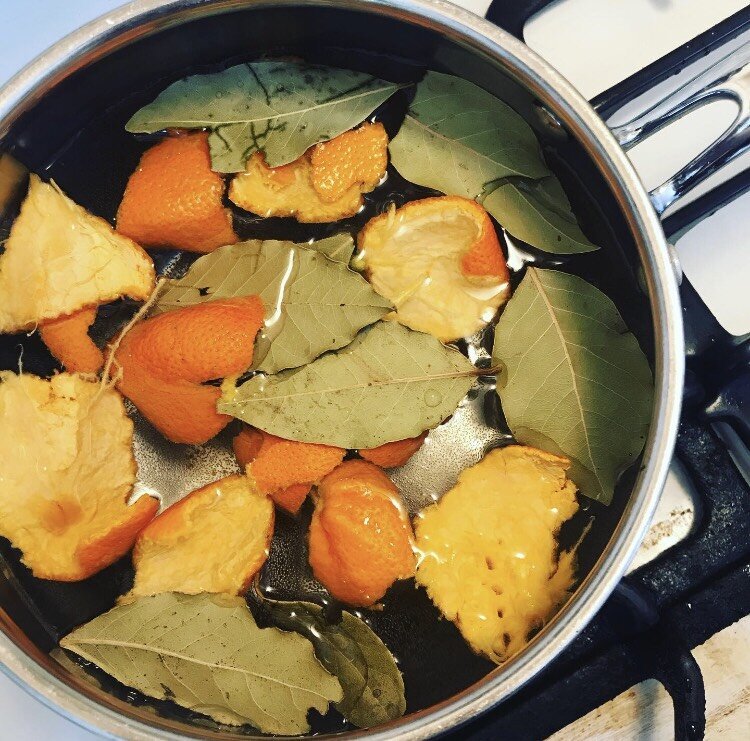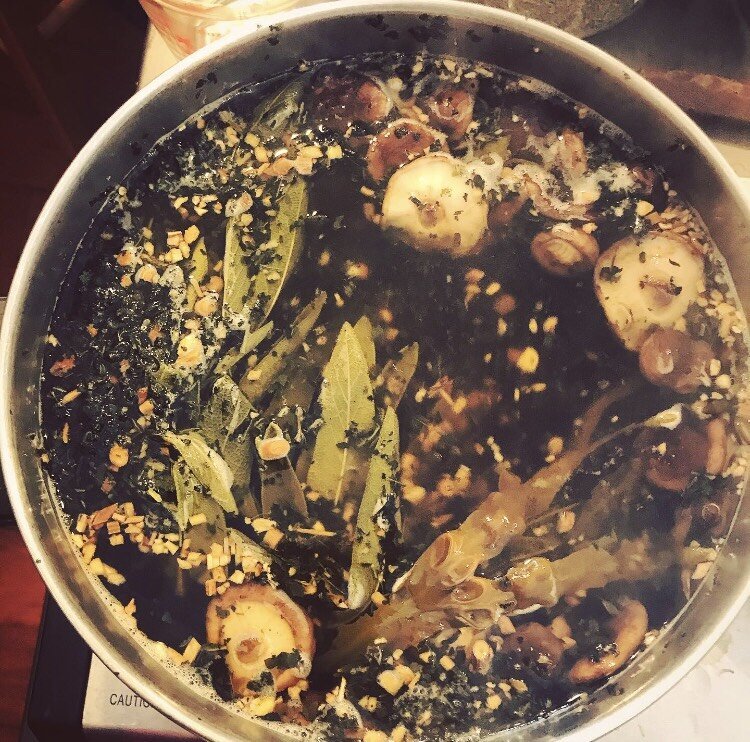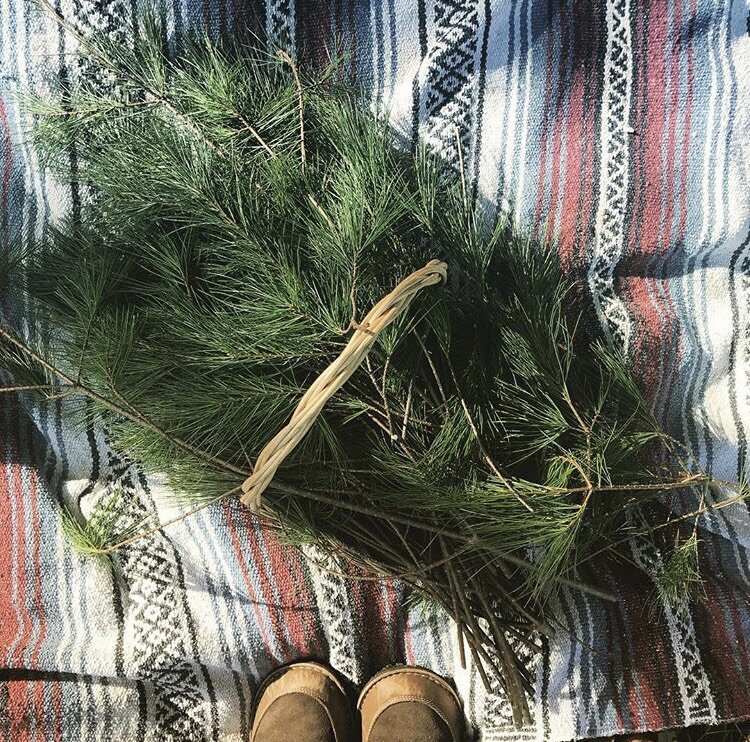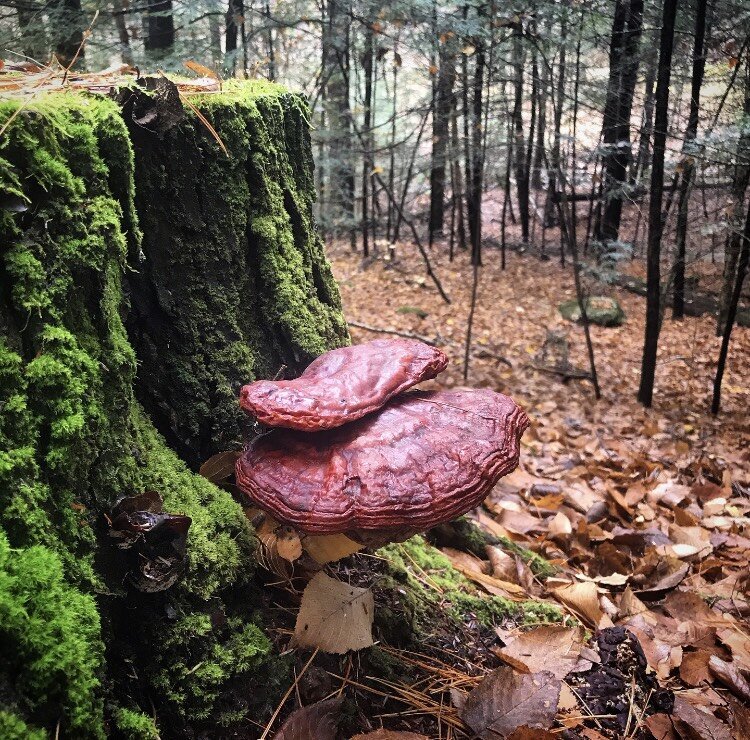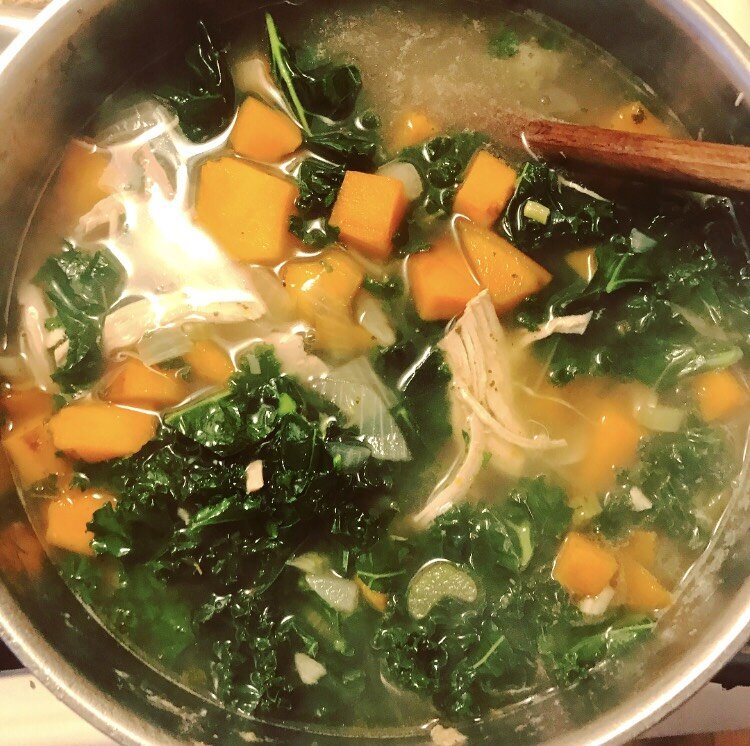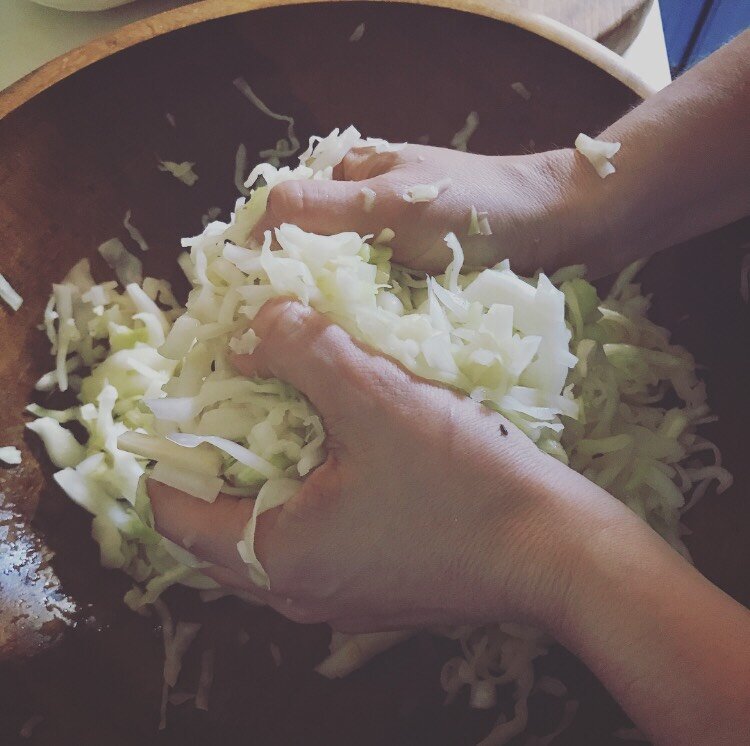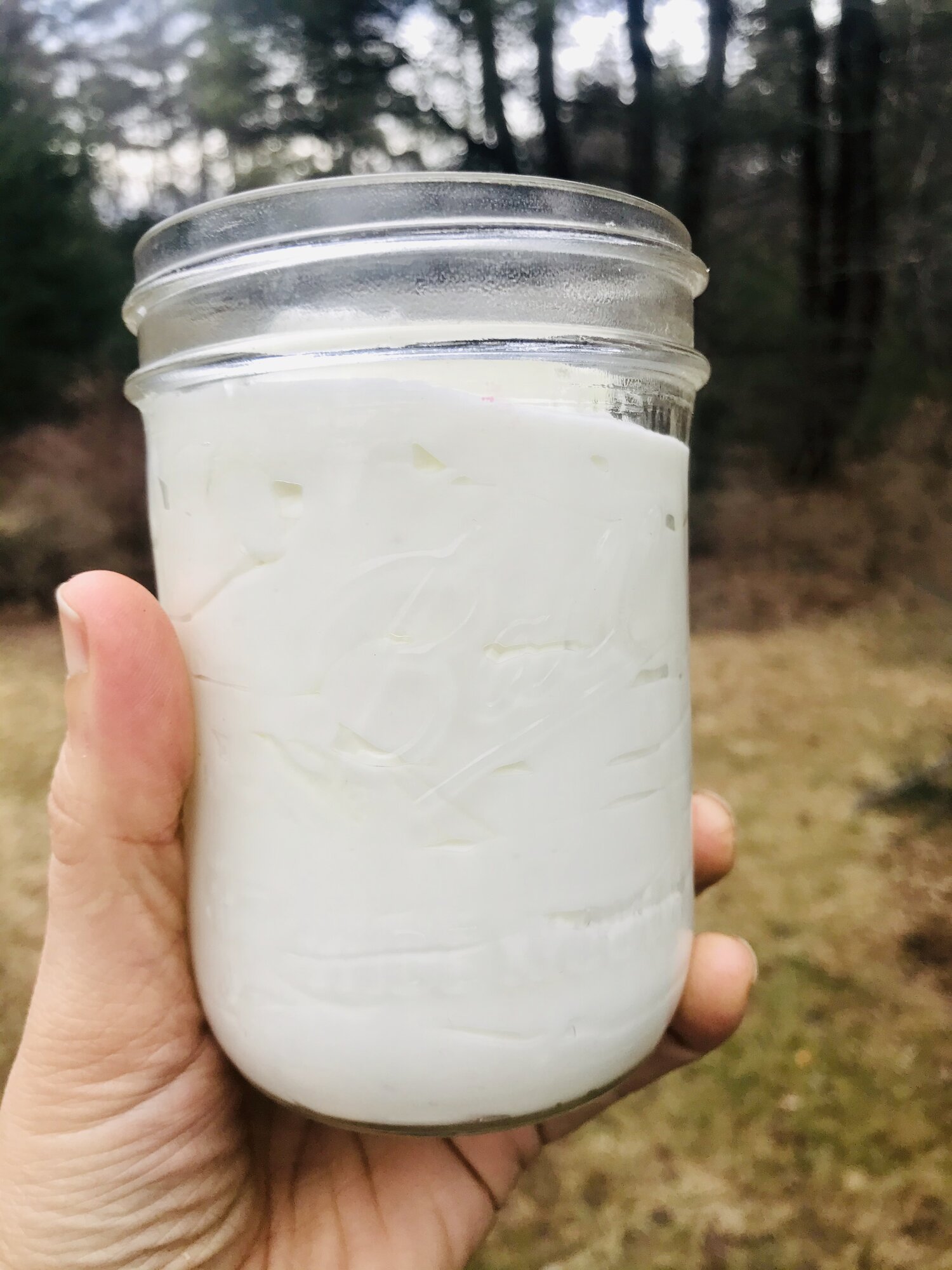Herbal Support During the COVID-19 Pandemic
I recently recorded a free Community Class on my Patreon Page, Herbal Support during the Covid-19 Pandemic, on my thoughts on easy and accessible herbal support you can be doing right now to protect yourself and strengthen your immunity. And I prepared an herbal resource PDF that links to the best herbal pages I've found with lots of herbal info on this virus and also share many of my favorite recipes that I feel are very applicable for this time. The information in the PDF is also shared below in this post.
Listen to the Class and Get the PDF HERE
1. The Basics- sleep, low sugar, hydration, physical distancing and community solidarity
2. Demulcent Herbs - Marshmallow Root, Chia seed, Linden, Aloe, Licorice, Anise seed, and Violet lvs- make a cold infusion by steeping 1 tbsp herb or powder in 1 cup of room temp or cold water for at least 4 hrs (powders will be ready in 5-10 min- mix well). Drink daily (up to 1 quart) as prevention to keep the mucous membranes of the lungs strong and soothed. Appropriate in dry, wheezing cough also but should be combined with herbal expectorants (see below). See my in-depth post about Marshmallow and demulcents on my facebook and instragram accounts (@milkandhoneyherbs)
Orange Peel and Bay kitchen aromatherapy
3. Steams & Kitchen Aromatherapy - Steams are a fantastic and accessible way to disinfect your airways and prevent respiratory infection. I recommend doing them especially when you get home if you have to out for groceries, etc. They're also great once a sickness has taken hold. Pictured here is Bay leaf and Orange Peel. Other great additions would be clove, lemon, thyme, rosemary, sage, pine or evergreen needles, eucalyptus...basically anything aromatic will work! Simply bring a small pot of water to a boil on the stove. Once it's boiling turn off the heat and add a large handful of herbs into the pot. Make yourself a steam tent with a towel and inhale the steam for 10-15 minutes. The antimicrobial volatile essential oils released from the heat will penetrate your lungs and sinuses and will directly interact with your mucous membranes, which are one of our primary barriers for pathogens trying to get into the body. Another lovely way to do this is as passive kitchen aromatherapy. Have a pot on the stove (or wood stove, if you have one) and add your aromatic herbs to it. Simmer it on low, adding water as needed, and the essential oils will help keep your immune system strong and purify the air!
4. Immune-Boosters and Modulators for prevention
-Vitamin C- 2,000-5,000 mg/day
-D3 liquid-5,000-10,000 iu/day
-Elderberry Syrup- 1 tbsp/day (adult), 1 tsp/day (child)
-Echinacea (cultivated only)- 1-2 tsp/day of the tincture. Also keeps the lymph moving (Cleavers and Red Clover would also be nice choices for this)
-Astragalus- put in your food (2-3 slices/cup of water for broths, soups, rice, grains, congee, etc). Tincture (1:5)- 40-80 drops 3x/day. eDcoction- 1 tsp herb: cup h20. Simmer for 20-30 min, let steep another 30 min. Strain. Drink 3 cups/day. Combines well with Reishi (and other medicinal mushrooms), Schisandra, and Codonopsis
-Medicinal Mushrooms- Maitake, Reishi, Shiitake, Turkey Tail, Oyster, Lion’s Mane, Wood Ear. Eat at least ½ lb/day also put into broths, soups, etc. The company Real Mushrooms sells powdered extracts that can be dissolved into water or sprinkled on food and capsules, too
-Cook with the culinary herbs- lots! Garlic + Ginger (fresh is best for both of these, grated over your food at the end), Rosemary, Thyme, Sage, Oregano, Basil, Cumin, Turmeric, Fennel Sd, Cinnamon, Black Pepper, Cardamom, and so on.
-Fire Cider- 1 tbsp/day (or more as needed)
-Broths- Make bone or veggie broths and add herbs, especially Astragalus, medicinal mushrooms (like the ones listed above), culinary herbs (like the ones above), seaweeds (in small amounts). Make extra and share withe elders and susceptible folks in your community
5. Nervines- Keeping your nervous system relaxed is so important. High levels of stress lower our immunity. There are many wonderful nervines (herbs that calm the nervous system) to choose from. Here are some of my favorites- Kava, Lemon Balm, Blue Vervain (Verbena hastata), Rose, St Johnswort, Tulsi, and Lavender are all great choices as teas and tinctures
6. If you get sick
-call your health provider immediately and follow their instructions (i.e. self-quarantine, go in for testing if they indicate you should, etc. DO NOT try to treat yourself with herbs alone- be sure to let them know you’re feeling sick. If your symptoms rapidly progress go to the ER/Urgent Care
-if you get a fever, diaphoretics to support a fever include Catnip, Linden, Ginger, Yarrow, Elder Flower, Chamomile, Lemon Balm, Garlic. Monitor fever. If you feel the need to suppress it’s recommended to choose paracetamol (Tylenol, acetaminophen) over NSAIDS (ibuprofen,aspirin). 1 tsp herb: 1 cup water, steeped 5-10 min drank as hot as possible. Can drink many cups/day
-STAY HYDRATED (crucial). Herbal popsicles made of herbal diaphoretics (sweetened with Elderberry syrup) can be a good way to get fluids into fevering kids
-if it goes to your lungs, expectorants are indicated as they thin mucous and help expel it from the lungs. Good choices include a combination of Mullein, Thyme, Elecampane, Anise Sd, Marshmallow Rt, Angelica, Ginger, Fenugreek, and White Pine (Pinus strobus)
- for tightness and wheezing consider respiratory anti-spasmodics like Wild Cherry Bark, Anise Seed, and Thyme
-and as a final reminder: Be in touch with your health care provider and if symptoms seem to be rapidly worsening don’t hesitate to seek immediate medical care. These suggestions are not a substitution for medical care.
Recipes
Elderberry Syrup
(recipe by local herbalist Brittany Wood Nickerson of Thyme Herbal in Conway, MA)
Ingredients:
6 Tbs. fresh elderberries or (4 Tbs. dried)
1 tsp. fresh ginger root
2 cups water
1/2 cup raw, unrefined honey
1/4 cup brandy (optional)
Directions:
Combine elderberries, ginger and water in a saucepan and simmer on low until the liquid volume reduces by half (to about 1 cup). Strain berries and ginger from decoction and add ½ cup of honey (or another natural sweetener) and brandy (optional). Mix until the honey dissolves and all ingredients are combined. Stored in refrigerator will usually last for up to 3 months and even longer with addition of brandy. To make an alcohol-free syrup try raw, unrefined apple cider vinegar instead of the brandy. You can also add some fresh squeezed lemon juice to this recipe. Lemon juice is high in vitamin C and also acts as a preservative.
Fire Cider
Ingredients:
1 Quart Organic Apple Cider Vinegar (raw if possible)
1/4 cup Fresh Horseradish, grated
1/2 cup Fresh Onion, chopped
1/8 cup-1 head Fresh Garlic (to taste) chopped
1/2 cup Fresh Ginger, grated
1/2 cup Fresh Burdock Rt, chopped (optional)
1 small cayenne pepper (or about 1 tsp)
Raw Honey
Some other fun additions: Lemons, Limes, Oranges, Turmeric, Pomegranate, Hibiscus Fls, Rosemary, Thyme, Oregano, Black Pepper, Fennel Sd, Coriander Sd, or different Hot Peppers (Serrano, Jalapeno, etc)
Directions: Chop-up all the ingredients and add to your jar. Cover the plant material about 3/4ths of the way with the apple cider vinegar and then cover the remaining 1/4th of the plant material with raw honey. This is kitchen medicine- its ok if your amounts aren’t exact- just do your best! Don’t worry if your honey doesn’t dissolve right away- it will dissolve in a few days, even if its crystallized. Cover the top with wax or parchment paper (since the vinegar will corrode metal) and then put the lid on over that. Let sit at least 2 weeks, shaking often. It’s ok if you don’t strain it in 2 weeks- you can even let it steep for a year- but it will be ready in 2 weeks. Strain and store out of direct light. This has a very long shelf-life and does not need to be refrigerated. This is a very basic recipe- let your imagination run wild! WARNING! Do not touch your eyes or any other mucous membrane after making this unless you wore gloves! This recipe makes 1 quart of fire cider.
Uses: Antiviral, antibacterial, antifungal, anti-inflamatory, digestive, decongestant, expectorant, immune-stimulant, liniment, cardiovascular tonic. Nearly every ingredient is antibacterial, and garlic and ginger additionally are antiviral, making this mixture a natural antibiotic! A classic remedy for colds and flu, Fire Cider increases your white blood cell count and stimulates immune response. It’s also a respiratory aid and as an expectorant has an affinity for coughs, helping to break-up congestion in the lungs and thin and expel mucous and phlegm. Perfect for a wet, boggy, deep coughs. Because it’s so decongestant it’s also very helpful for sinusitis and allergies (seasonal, hayfever, mold, etc) to relieve sinus congestion, sinus headaches and copious mucous discharge. It’s a circulatory stimulant, both internally and topically as a liniment for bruises, strains and injuries, and has anti-inflammatory properties as well. Fire Cider is also a cardiovascular tonic helpful for high cholesterol, prevent arteriosclerosis, and for heart health in general. Lastly, it’s an excellent digestive formula, stimulating digestive enzymes and secretions, helping ease gas and bloating, and supporting nutrient absorption and over-all digestive health.
Dosage: As a general tonic to prevent cold and flu as well as its many other uses, take about 1 tbsp 1-2 x/day mixed in water or straight. It can also be added to foods like dressings, marinades, soups, or tossed on cooked greens. A nice way to enjoy it in the winter is as an herbal “hot toddy,” simply mixing it with a cup of hot water. You can also add it as the vinegar portion when you’re making bone broth. To help with digestion include it with your food or take it as a digestive bitters- take ½-1 tsp straight or with a small amount of water 5-10 minutes before meals to stimulate digestion. If you are coming down with a cold or flu or already sick, increase dosage to 1 shot glass of Fire Cider anywhere from 1-5x/day, diluted or straight.
Contraindications: Since this formula is so hot and spicy in nature precaution should be taken for those with chronic heartburn, acid reflux, gastric ulcers, IBS, Crohn's Disease, sensitive stomach. Stop taking 2 weeks before and after surgery because of blood-thinning effects.
Diaphoretic Tea
Ingredients:
Equal Parts:
Yarrow (Achillea millifolium)
Peppermint or Chocolate Mint (Mentha spicata)
Elder Flower (Sambucus canadensis, S. nigra)
Directions:
Make a simple infusion (classic tea) of the mixture of above herbs. Use about 2 tsp herbs: 1 cup water, pour boiling water over the herbs, cover and let sit for about 5-10 minutes. Strain and drink!
Uses:
Antiviral, diaphoretic, antibacterial, digestive aid. Excellent remedy to take at absolute first sign of a cold or flu and especially if you are running a low-grade fever and have the fuzzy head, headache, aches and pains, a cold sweat and chills. Make the tea and run a hot bath. Make the bath as hot as you can tolerate, get in and bring in a cup of very, very hot tea and drink it in the bath as hot as you can stand. Soon you will start to sweat. Once you have been sweating for about 10 minutes and the bath begins to cool, get out. Staying warm, dress in the warmest clothes you can, get under lots of covers, go to sleep and sweat that cold out! In the morning you should feel much, much better. Also excellent to take if the cold or flu has already taken hold. Other diaphoretic herb (see list above) can be used too.
Elder flower
Immune Broth
Ingredients:
8 cups water/bone broth/vegetable broth/chicken broth/miso broth
2 tbsp Astragalus rt, Codonopsis, Goji Berry, or American Ginseng* (*cultivated only)
2 tbsp Nettles (or other nutritive herb)
2 tbsp Shiitake, Maitake, Reishi, Turkey Tail or other medicinal mushrooms
1 tbsp Rosemary/Thyme/Sage or other culinary herb of choice (3 tbsp if fresh)
1 tbsp Garlic and/or Ginger
1 tsp Seaweed of choice
Directions & Use:
Combine all ingredients in your liquid of choice, cover, and let simmer gently for ½ hr to 45 minutes. Feel free to add any veggies or meat if desired if making soup or just leave it as is and strain for a simple broth. Let cool. This soup/broth is meant to build-up the immune system and prevent illness. If you’re using it preventatively, a cup/day in the winter months would be excellent, or if you think you’re coming down with something have 3 cups/day. If you have signs that you are already sick you should NOT drink this as Astragalus is not for acute. You could just leave-out the Astragalus and increase the mushrooms. This could be strained and frozen as a broth or the entire soup may be frozen as well! Sip warm with sea salt, use as your liquid portion when making grains, make ramen, and so on- the possibilities are really endless! An alternate way of making this is to simply add-in the herbs while you’re making your regular bone broth or veggie broth- my favorite way to do it!
Listen my episode on the Herbrally Podcast all about making your own herbal bone broth here!
White Pine Cough Syrup
Ingredients:
White Pine (Pinus strobus) needles + twigs-2 parts
Wild Cherry Bark (Prunus serotina) – 1 part
Mullein Lf (Verbascum thapsus) – 1 part
Marshmallow Rt (Althea officinalis)- 1 part
Elecampane Rt (Inula helenium)- 1 part
Thyme lf (Thymus vulgaris)- ½ part
Anise Sd ½ part (Pimpinella anisum)- ½ part
Cinnamon (Cinnamom spp)- ¼ part
Water
Raw Honey
Other nice additions would include Common Violet Lf (Viola odorata),Ginger (Zingiber officinalis), Anise Hyssop (Agastache foeniculum), Rose Hips (Rosa spp), Fenugreek Lemon Verbena (Aloysia citrodora), Fir boughs (Abies spp), Eastern Hemlock needles and twigs (Tsuga canadensis).
White Pine
Directions:
Add your herbs to a pot. 1 part can be whatever you want- 1 tbsp, 1 cup, etc. Cover the herbs with about 2 inches of water and simmer on low to make a decoction. I keep a lid on it but use a lid with a small hole in it for some steam to escape. Simmer for about an hour, until the water reduces to just covering the herbs. Then remove from heat and let the herbs continue to steep until the decoction cools. Next, strain it and for every cup of the decoction add 1/2 cup raw honey, and that’s it! It’s important not to heat the raw honey to a boil, but it is ok to warm it all gently to get the honey to mix. Putting it in a mason jar and then capping it and shaking vigorously is another great way to mix the honey in. An adult dose of this could be 1 tbsp every hour until cough improves- in order for herbs to work in acute conditions you often have to use lots! For kids a tsp (mixed in elderberry syrup if they don’t like the flavor) 3x/day will suffice. This will likely last 1-2 weeks but we always use it up before it goes bad. You could also freeze the decoction and thaw and add the honey as needed!
This is an excellent all purpose cough syrup because it is well-balanced formula that incorporates herbs with a wide variety of herbal actions appropriate for a diversity of respiratory issues, from wet coughs, to dry coughs, to spasming coughs. The Wild Cherry, Thyme, and Anise all have anti-spasmodic properties that will help with a hacking, spasming cough. The Marshmallow, Cinnamon, Anise, and Mullein have a soothing effect on sore throats from coughing and dry irritated lungs. The Mullein, Thyme, Anise, Cinnamon, White Pine, and Elecampane have expectorant properties and will help break-up mucous and congestion in the lungs, and the Elecampane, Thyme, White Pine, and Cinnamon are antimicrobial, essential oil-rich herbs which help fight respiratory infections. 1 tbsp is a dose and if the cough is acute you can take up to 5 tbsp/day
Learn more about White Pine on my White Pine Medicine monograph here!
Learn more about our bioregionally abundant evergreens including Pine, Spruce, Eastern Hemlock, and Fir here!
Astragalus & Reishi Chai
Ingredients:
1.5 tbsp Astragalus
1.5 tbsp Reishi Mushroom
1 tsp Cinnamon
1 tsp Caradamom
1 tsp Ginger
1 tsp Rose Petals (optional)
2 cups water
2 cups milk of choice (cow, coconut. oat, hemp, almond, etc)
NOTE: If Astragalus isn’t available Codonopsis/Dang Shen (Codonopsis pilosula) is good option. Other medicinal mushrooms that could be used with or in place of the Reishi or included with it are Maitake, Shtitake, Turkey Tail, or Birch Polypore (Fomitopsis betulina)
Directions:
Combine all the ingredients in a pan. Bring to a boil then cover and reduce to a simmer. Simmer on low, covered, for at least ½ hr up to an hour. Strain,. 2 cups/day is a medicinal dose. Make a big batch and store in the fridge for up to 4 days or freeze!
Reishi mushroom (Ganoderma tsuga)
Astragalus Congee
Ingredients:
1 cup white basmati rice
10 cups water/vegetable/chicken broth/bone broth
10 tsp (or about 30 roots slices) Astragalus
1 tsp fennel seed (or powder)
1 tsp fenugreek seed (or powder)
1 tsp cumin seed (or powder)
1 tsp cardamom pods (or powder)
Ghee and sea salt to taste
NOTE: If Astragalus isn’t available Codonopsis/Dang Shen (Codonopsis pilosula) and Goji Berry/Lycium/Gou Qi Zi can be added in its place or added to this recipe along with the Astragalus
Directions:
Brown the spices in ghee. If you’re using whole seeds (my preference) lightly bruise them first in a mortar and pestle. Add the rice, astragalus, and water (or broth of choice) to the pot and if you don’t want to use all that broth try using a combination of broth and water. Bring to a boil then turn down to a simmer. Cook for 30 minutes minimum and until the rice absorbs all the liquid and you have porridge-like consistency. Remove from heat. Eat around the Astragalus roots or remove before serving. If you add Codonopsis and/or Goji Berry there’s no need to remove them since they can be eaten. Serve with a generous spoonful of ghee per bowl (1-2 tbsp) and sea salt to taste. Congee is an ideal food for immediate post-partum, which is a time of decreased digestive fire or “agni.” It’s mild and easily digestible, and very unlikely to cause any digestive discomfort in an infant. The ghee helps re-ignite digestive fire, as do the spices in the congee as well. It’s also specific for any time there is impaired digestion, for example following a viral stomach bug, any illness that causes low appetite, nausea when trying to eat heavy foods, and so on. Also wonderful as a simple and nourishing breakfast, especially when made with broth!
Deep Immune Syrup
Ingredients:
Reishi Mushroom 1 part
Astragalus 1 pt
Schizandra 1 pt
Ginger ¼ pt
Honey (raw is best)
Water
Raw Apple Cider Vinegar, Brandy, or similar alcohol of 40-50% alcohol
NOTE: If Astragalus isn’t available Codonopsis/Dang Shen (Codonopsis pilosula) and Goji Berry/Lycium/Gou Qi Zi can be added in its place or added to this recipe along with the Astragalus. Other medicinal mushrooms that could be used with or in place of the Reishi or included with it are Maitake, Shtitake, Turkey Tail, or Birch Polypore (Fomitopsis betulina)
Directions:
First, made a double decoction of the herbs by combining them with water at a ratio of 1 tbsp dried herbs to 1 cup water. Next, simmer the herbs and water on medium-low until the water reduces by about half. Strain, and add ½ cup of honey for every cup of decoction. You may add raw apple cider vinegar or brandy, at a ratio of 1/4th cup for every cup of finished syrup if desired, which will help extend the shelf-life. You can also use a tincture of any of these ingredients instead of the brandy/alcohol. Must be refrigerated! Lasts about 2 weeks-1 month without the addition of the apple cider vinegar/alcohol and months with it. Can freeze for future use.
Use:
This syrup builds-up and strengthens immunity at the bone marrow level. Helps prevent colds and flus and strengthens low immunity. For the person who catches everything that goes around. Enhances over-all health and may be used as a daily tonic. Stop using it while acutely sick with a cold, flu, etc. Take 1-2 tbsp/day on its own mixed in warm water, in bubbly water, in and on foods, etc
Chicken Soup from Scratch with Sweet Potato, Kale, & Sage
Ingredients:
1 whole chicken (3- 5 lbs)
1 bunch kale, chopped (about 4 cups, chopped)
3-4 cups sweet potato, cut into 1 inch cubes
1 medium onion, chopped
3 stalks celery, chopped
4 cloves garlic, minced
4 tbsp fresh sage, chopped or 2 heaping tbsp dried
Olive Oil
Sea Salt
Black Pepper
Directions:
Start by cooking your chicken. Put it in a large stock pot and cover it with water, adding an onion chopped in half, 2 stalks of celery, garlic, black pepper, and a large carrot to the water. Cover and bring to a low simmer and cook for 45 min to an hour. Once it’s cooked remove the chicken from the broth with tongs, let cool, and de-bone, setting the meat aside. The bones can be reserved for a batch of bone broth- put them in the freezer if you don’t have time to make a batch right away! Once the broth cools a bit strain it through a mesh strainer into another pot or vessel, saving for the soup- and congrats, you’ve just made the MOST delicious homemade chicken broth ever! While the chicken is cooking and/or cooling chop your veggies for the soup and begin cooking them. Start by sautéing the garlic, onion, celery and sage in olive oil until the onions are translucent. Next add the sweet potatoes, 2-3 cups shredded chicken (you will get about 1 cup of meat/pound of a whole chicken, save any extra chicken for pot pie, fajitas, a meat sauce, etc), and broth. I like to make this a very brothy soup- add enough so it is most definitely a soup and not a stew, and remember, you can just add more broth if it seems like you didn’t add enough. Bring to a simmer and cook about 10 minutes, until the sweet potatoes are soft. Last, add the kale and cook another 5 minutes. Add salt and black pepper to taste. Turn off the heat, cover, and let the flavors meld for at least 10 minutes until serving. Enjoy!
Lacto-fermented Sauerkraut
Raw fermented sauerkraut is an easy, affordable way to enhance digestion and nutrient assimilation. Sauerkraut provides a natural source of potent, immune-enhancing live beneficial bacteria, also known as probiotics. Sauerkraut is an excellent source of Vitamin C and is rich in phytonutrients and cancer-fighting compounds.
Ingredients:
1 head red or green cabbage, finely chopped or grated
Finely ground sea salt
Non-chlorinated water (you can leave chlorinated tap water out on the counter overnight and it will evaporate)
Optional: Herbs (Cumin Sd, Caraway Sd, or Marjoram are nice choices)
Preparation:
STEP 1: Chop or shred the cabbage as finely as possible
STEP 2: Start adding the cabbage and salt to your container (anything but metal will do), firmly tamping it down as you go. The basic ratio for salt to cabbage is 2.5-3 tbsp: 5 lb cabbage. If you don’t have a kitchen scale, you can weigh your cabbage out at grocery store on the produce scale. Try to distribute this evenly as you add your cabbage to the crock. Some people measure their salt, others don’t. Too much salt will inhibit fermentation so it’s better to be conservative. If you are adding herbs add them as you add the salt, at a ratio of about ¼- ½ tsp: 1 lb cabbage, basically to taste.
After you have about a 2-inch layer of cabbage added to your crock, tamp it down firmly with a pestle or wooden spoon. This helps the cabbage release it juices and make a good brine - the salt does this as well.
STEP 3: After you’ve added all you cabbage/salt mix, place a clean plate over it to weigh it down. Important note: The brine should completely cover the cabbage so none is exposed. If necessary fill a large mason jar with water and place it on the plate to help weigh it down. If the brine has not completely covered the cabbage within 24 hours of making it, you can make your own brine and add it. Use 1.5 tbsp salt: 4 cups water to make a brine.
STEP 4: Let it ferment! Cover the entire set-up in a cloth to keep out dust, etc. Bubbles and foam are all signs of healthy fermentation, you may skim them off if you’d like. Occasionally some mold will appear on the surface of the brine. Simply skim it off. It’s no big deal and will not affect the sauerkraut below it.
Fermentation times can vary widely. A warm environment will speed-up fermentation and a cold one will slow it. Let the sauerkraut ferment “to taste”. Try it every couple of days, and when it tastes good and done (aka sour!) put it in a glass jar with a lid. You want it to be fresh-tasting and crunchy. If it’s getting soft its been fermenting too long. Store sauerkraut in the fridge once it is “done” since the cold temps will slow fermentation to virtually a standstill.
STEP 5: Enjoy! Have a nice 2-3 tbsp of sauerkraut daily with your meals to add delicious, bright flavor.
Rosemary’s Perfect Hand Cream/Herbal Lotion
(Adapted from Rosemary Gladstar’s book Herbal Recipes for Vibrant Health)
Ingredients:
Waters:
2/3 cup distilled water or rose water/hydrosol of choice (you can also use tap water, it might just got bad quicker)
1/3 cup aloe vera gel (if you don’t have this use an extra 1/3 c of the distilled water/hydrosol)
1 or 2 drops essential oil of your choice (optional)
Vitamins A and E as desired
Oils:
3/4 cup apricot, almond, or grapeseed oil (can also use olive oil and infused oils)
1/3 cup coconut oil or cocoa butter
2 tbsp grated beeswax
Directions:
Combine the waters in a glass measuring cup. Set aside. In a double boiler over low heat, combine the oils. Heat them just enough to melt. Pour the oils into a blender and let them cool to room temperature. The mixture should become thick, creamy, semisolid, and cream-colored when it’s sufficiently cooled. This can take anywhere from 4 hrs to overnight (depending on the temperature) so I make this oil mixture the day before I plan on making this recipe. When you’re ready to make your cream turn on the blender at its highest speed. In a slow, thin drizzle, pour the water mixture into the center vortex of the whirling oil mixture. When most of the water mixture has been added to the oils, listen to the blender and watch the cream. When the blender coughs and chokes and the cream looks thick and white, like buttercream frosting, turn off the blender. You can slowly add more water, beating it in by hand with a spoon, but don’t over-beat. The cream will thicken as it sets. Pour into cream or lotion jars and store in a cool location. Refrigeration will prolong its shelf-life, as will the addition of vitamin E and essential oils.
Homemade Hand Sanitizer
Ingredients:
2/3 Rubbing Alcohol (or 195 proof alcohol- NOT vodka)
1/3 Aloe Gel or Vegetable Glycerin
Essential oils (add about 5-10 drops/cup of sanitizer)
Directions:
Mix the ingredients well and put into a spray bottle. Not a substitute for washing your hand!
More resources on COVID-19 from the Herbal Community
American Herbalist Guild COVID-19 webpage full of resources
Herbalist Dori Midnight reading her poem/prayer/invocation “Wash Your Hands”
COVID-19: An Herbalist's Perspective (FB live replay or slide notes) by Guido Mase, Tammi Sweet, and Deb Soule
Herbalist Lisa Fazio of The Roots Circle FREE ebook- Guide to the Culinary Herbs & Spices: Medicine from the Kitchen Cupboard
COVID-19: One Herbalist’s Thoughts On The Coronapocalypse, By Thomas Easley
Online Herb Suppliers- Black Locust Gardens, Zach Woods Herb Farm, Foxtrot Farm. Mountain Rose Herbs, Frontier Coop, Oshala Farm, Pacific Botanicals, Monterey Herb & Spice Company, Jean’s Greens, Healing Spirits Herb Farm
This information is offered on this handout is not intended to treat, cure, or diagnose any disease and is meant for informational purpose only
